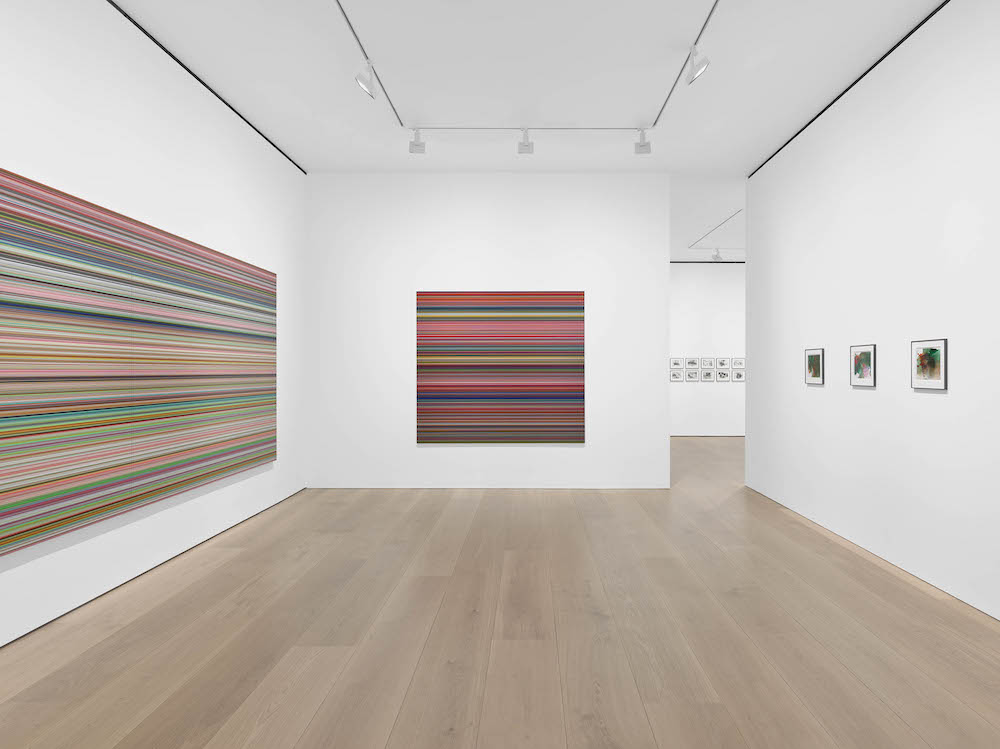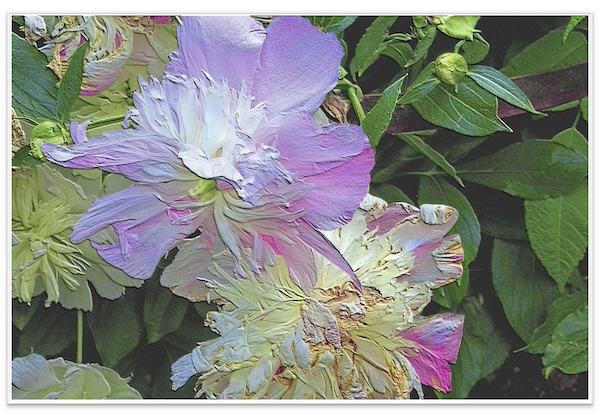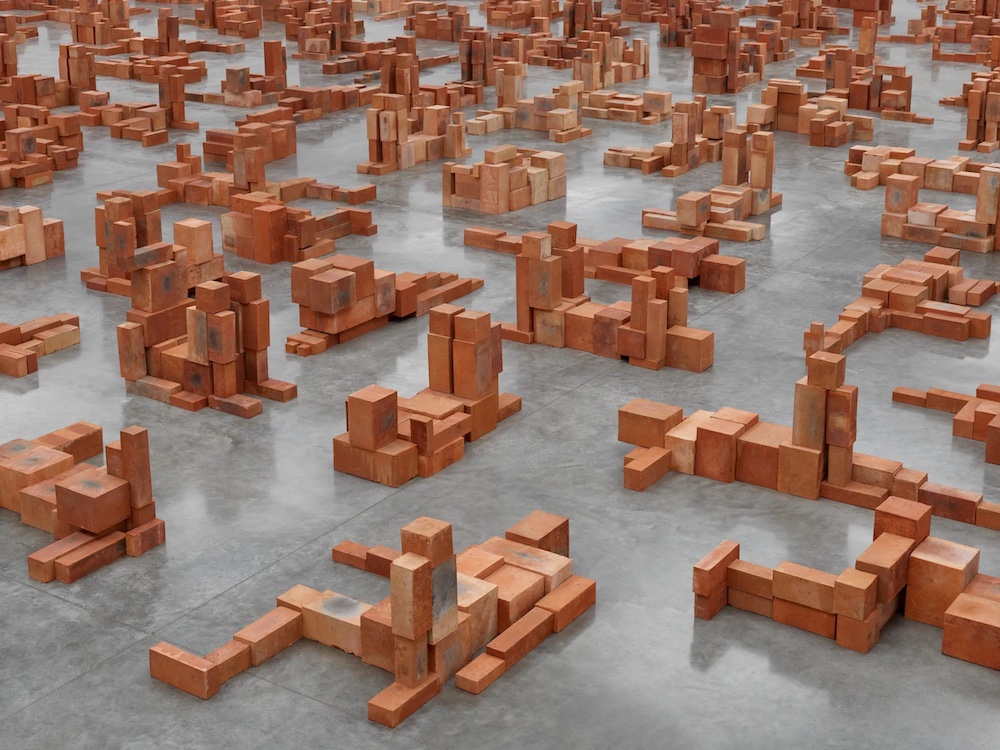“In painting, thinking is painting” — this foundational idea permeates all of the work of Gerhard Richter, establishing him as one of the most influential artists of our time. Richter’s artistic philosophy, delicately balancing intuition and intellect, chaos and order, is eloquently captured in this quote by the esteemed master. His relentless drive to innovate and push the boundaries of abstraction is evident in the outstanding exhibition of Richter’s works at David Zwirner Gallery, serving as a firm testament to his enduring legacy.
Gerhard Richter’s artistic journey traverses a complex landscape shaped by historical and ideological influences. Born in Dresden in 1932, Richter’s experiences in post-war Germany and subsequent defection to the West informed his artistic style and philosophy. Initially drawn to a middle ground between Eastern realism and Western modernism, Richter’s exposure to American and Italian artists prompted a desire for greater radicalism. Rejecting political agendas in his art, Richter sought a balance between formalism and historicity, challenging traditional notions of representation and abstraction.
Influenced by a diverse array of artists and movements, including Karl Otto Götz and Fluxus, Richter embarked on a quest for a “third way” that reconciled competing artistic ideologies. This journey culminated in his iconic “photo-paintings,” where he achieved a delicate balance between realism and abstraction, distilling complex themes into visually arresting compositions. Richter’s deep engagement with art history and theory is evident in his references to influential figures like Marcel Duchamp and Piet Mondrian, whose ideas permeate his artistic practice, as seen in works like Rhombus [851-1] (1998). Despite his skepticism towards utopian dimensions of abstract art, Richter’s work embodies a nuanced engagement with the subject of history and its agents, reflecting his ongoing exploration of artistic expression beyond formalist constraints.
Gerhard Richter’s New Work Debuts at David Zwirner in London
David Zwirner’s exhibition in London not only showcases Richter’s recent classic works but also introduces new pieces, providing a comprehensive overview of the artist’s journey. This show holds particular significance as it marks David Zwirner’s inaugural presentation of Richter’s oeuvre in London, following the announcement of his representation by the gallery in December 2022. This event comes after the artist’s successful debut at David Zwirner New York in 2023, further solidifying Richter’s global influence and resonance within the contemporary art world.
Within the carefully curated installation space lies a profound exploration of Gerhard Richter’s enduring fascination with the fluidity of perception. At the forefront are three of Richter’s iconic abstract paintings, crafted in the years leading up to his transition from working with oil paint. In 2017, at the age of 85, the artist announced the completion of his final abstract paintings, a collection comprising 47 works. Citing fatigue from the painting process, he declared his intention to redirect his creative energies towards drawing.
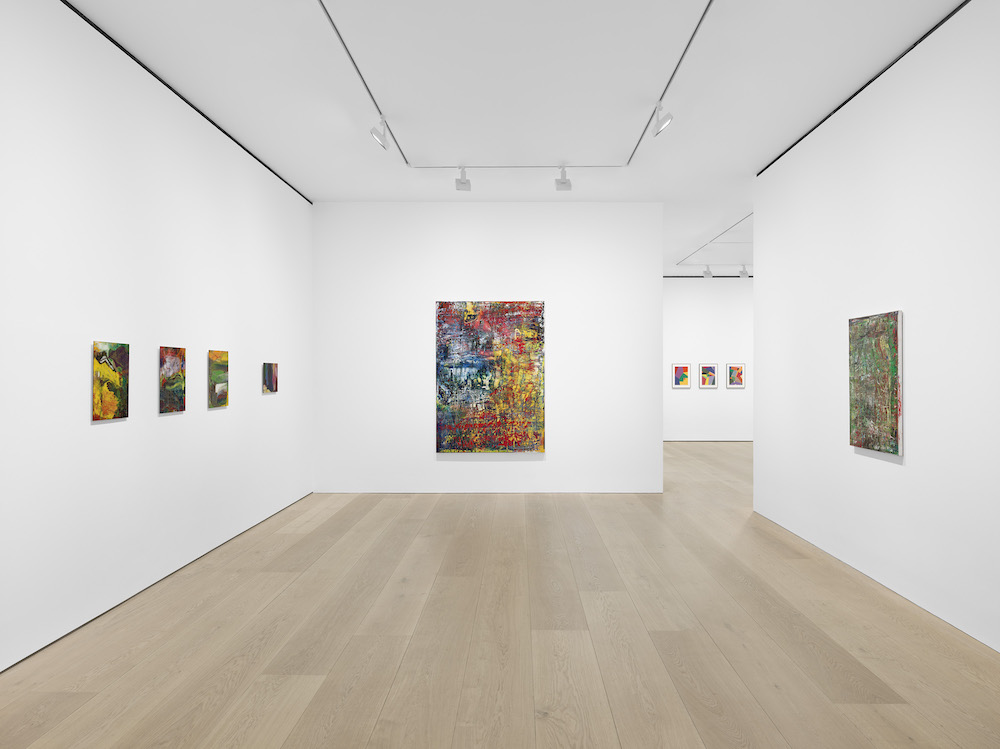
Installation view, “Gerhard Richter,” London, 2024, © David Zwirner.
Richter initiated his first abstract painting series in 1976 and continued executing them until 2017. Characterized by vibrant colors, dynamic brushwork, and layered compositions, these paintings reflect Richter’s interest in the act of painting itself, as well as in the concept of chance and control. For Richter, chance is not merely coincidence, but always a tool and a method, as he emphasized in a 2004 interview, “By accepting coincidence as an event that goes far beyond my faculties of imagination, even beyond all comprehension, I take on the role of someone who can only react to it—and yet, despite the helplessness of this position, can still make something out of it, to the point where it is no longer a coincidence anymore. And then you have a new coincidence.”
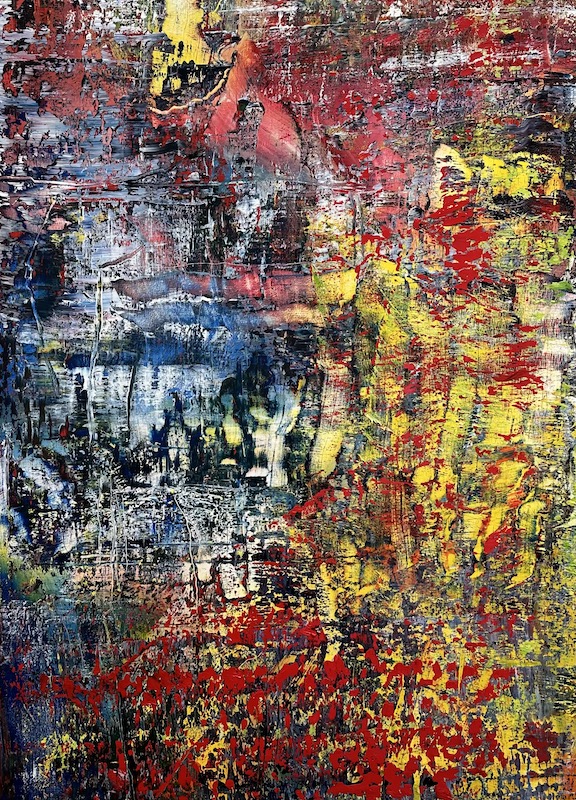
Detail of Gerhard Richter’s “Abstraktes Bild (Abstract Painting),” 2015, David Zwirner, London, 2024, © Whitewall.
The “Abstraktes Bild” series was created using Richter’s revolutionary squeegee technique. This method involved the initial application of oil paints across the entire canvas using brushes, typically employing two or three primary colors. Following this base layer, Richter would add muted hues on top, using various squeegees to achieve the desired effects. The squeegee not only applied paint but also pressed and blended the damp layers, creating a textured surface. Once dried, Richter would partially scrape off sections, reapplying paint to build up layers. In the final stages, he would delicately manipulate the squeegee with less pressure, allowing the paint to adhere only to raised areas. This meticulous approach resulted in abstract paintings veiled in a subtle layer of paint, partially concealing the underlying layers and creating an intriguing depth.
Striking New Works on Paper by Gerhard Richter
A highlight of the exhibition is Richter’s striking array of new works on paper executed in 2023. These creations unveil a fresh urgency in his approach to method and technique, as ink and pencil converge to orchestrate an interplay of color and form, coaxing unexpected shapes to life. In contrast, Richter’s pencil drawings exhibit a compelling interplay between sharp, defined shapes and more organic, flowing lines achieved through techniques such as smudging, hatching, and erasure. This juxtaposition infuses the artwork with dynamic tension, inviting viewers into a world where choice and chance intertwine in a mesmerizing dance. Despite the smudged and obscured effects of graphite, Richter consistently grounds his drawings with his signature and exact date, anchoring these ethereal images in a specific moment in time.
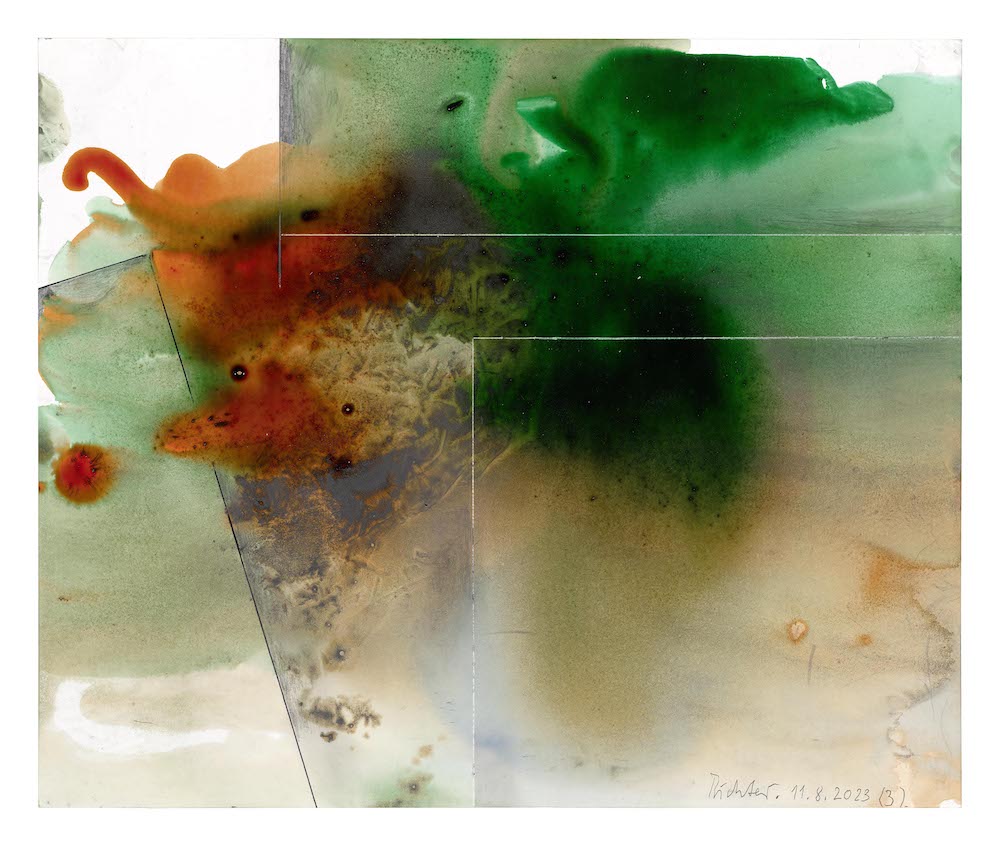
Gerhard Richter, “11.8.2023 (3),” 2023, colored ink and pencil on paper, © David Zwirner.
Richter often organizes his drawings into series, with each piece dated sequentially, suggesting a sense of progression or cycle, as if each drawing is part of a larger narrative or exploration. Dieter Schwarz highlights Richter’s intermittent creative process, characterized by periods of intense activity followed by extended breaks for reflection and introspection. This rhythm is reflected not only in Richter’s paintings but also in his works on paper, emphasizing the importance of both action and contemplation in his artistic practice.
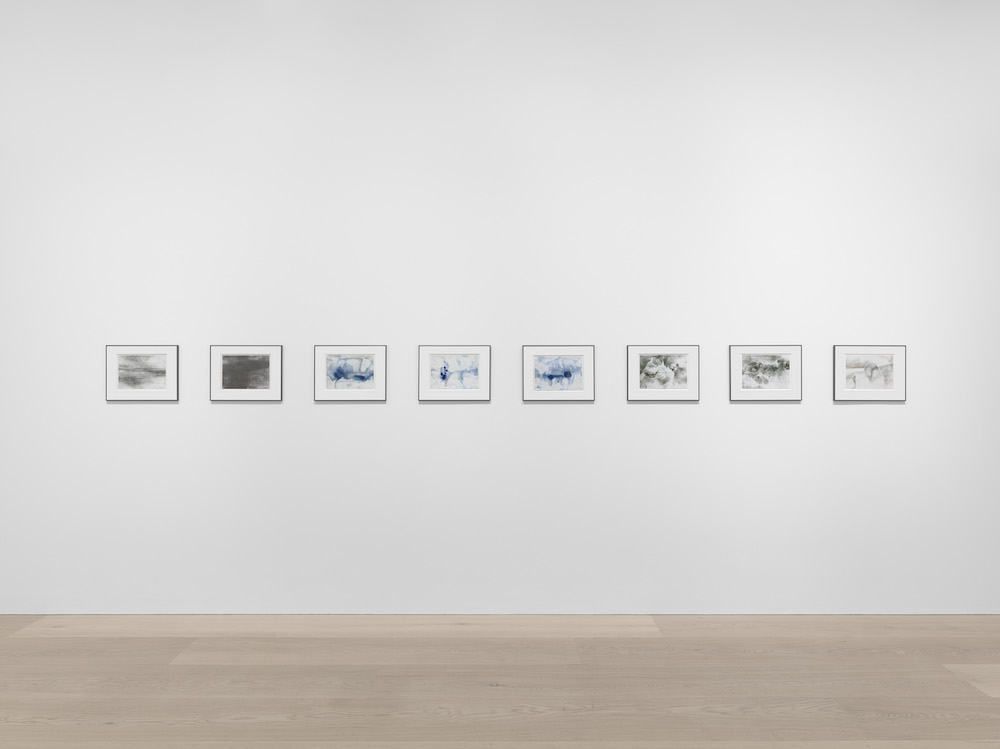
Installation view of “Gerhard Richter,” in London, 2024, © David Zwirner.
In addition to Richter’s new pencil drawings, the exhibition showcases a collection of vibrant lacquer-behind-glass paintings from 2010. These small and intimate-scale lacquer paintings are named after characters and figures from the Middle Eastern folk tales of One Thousand and One Nights. Richter experimented with lacquer as early as 1985 but ultimately destroyed the outcomes. However, between 2008 and 2013, he revisited this concept within his multipart series “Baghdad [914-1] to [914-251],” “Aladdin [913-1] to [913-42],” “Ifrit [915-1] to [915-26],” “Perizade [916-1] to [916-21],” “Abdallah [917-1] to [917-1001],” and “Flow [933-1] to [933-3],” “[934-1] to [934-181].” For these pieces, Richter poured variously colored lacquers onto a smooth surface, occasionally manipulating them with a spatula before relinquishing control to their intrinsic material dynamics.
Investigating Paint as Concept and Substance
In the lacquer paintings, Richter delves into the multifaceted nature of paint, both as a conceptual image and as a physical substance. Furthermore, he explores the idea of the picture plane itself, examining the boundaries between layers and surfaces. At times repelling, at others flowing into each other, the lacquers amalgamate into unpredictable formations, solidifying the moment the artist places a glass plate over the paint. Carefully withdrawing the plate, Richter allows the composition to dry before sealing it at the back with an aluminum Dibond panel. Enthralled by the autonomous behavior of the lacquers and the infinite diversity they engender, Richter explores various formats.
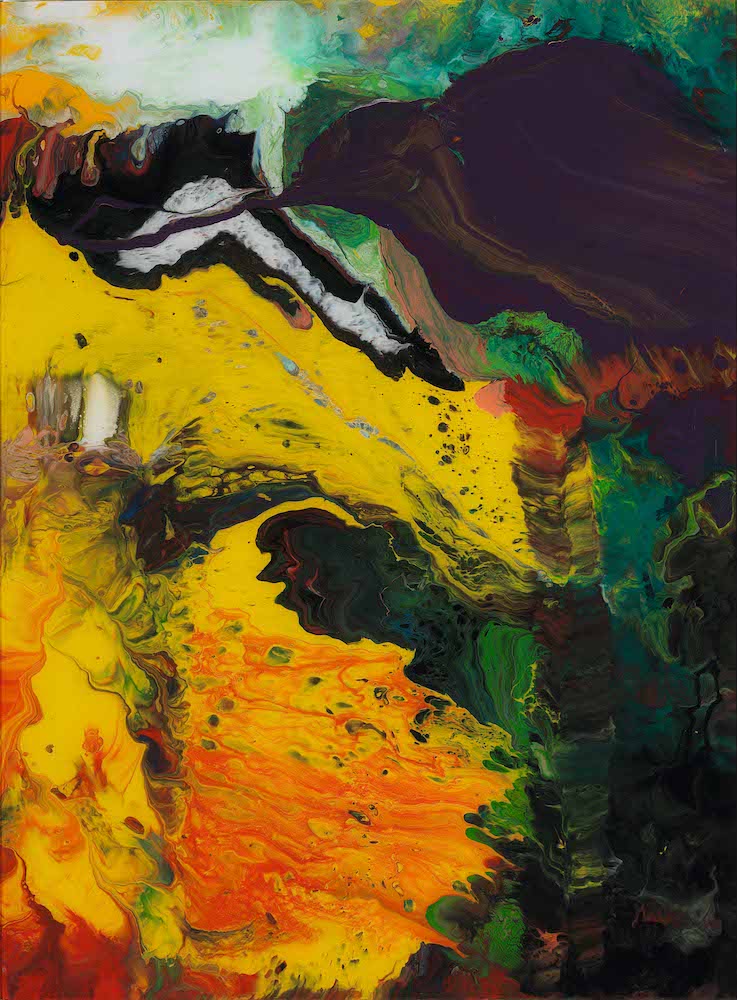
Gerhard Richter, “Aladin (Aladdin),” 2010, lacquer behind glass, mounted on Alu-Dibond, © Gerhard Richter 2024.
Richter’s abstract “Reverse-Glass paintings” possess an inherent enigma, reminiscent of agates or aerial perspectives of the Earth. As Richter expressed in 2008, there’s a tendency to seek recognizable elements within the non-figurative: “As we do with every other image, every view, we examine it for resemblances to things and circumstances that we’re familiar with and remember.”
Building on his enduring fascination with color experimentation, Richter’s exploration of color charts ultimately culminated in the creation of his iconic “Strip paintings”. The work on display at David Zwirner is one of the largest “strip paintings” to date. The artist produced “Strip paintings” between 2011 and 2013. These represent a departure from traditional motifs, echoing the enigmatic qualities found in his “Reverse-Glass paintings”. Stemming from the original “Abstract Painting [724-4]” of 1990, Richter digitally manipulated the canvas, employing the “divide mirror-repeat” principle to generate intricate variations. Through meticulous segmentation and mirroring, the initial image evolved into 4,096 thin vertical strips composed of colored pixels, mirrored and repeated to craft the final “Strip paintings”. This methodical process, oscillating between mathematical precision and artistic curiosity, reflects Richter’s ongoing exploration of perception and representation. The resulting works are characterized by razor-sharp detail and vibrant hues. Richter’s “Strip series” captivates viewers with their kaleidoscopic patterns and seemingly fluid movement, challenging the limits of human sight and reinforcing Richter’s interrogation of the medium’s role in shaping reality.
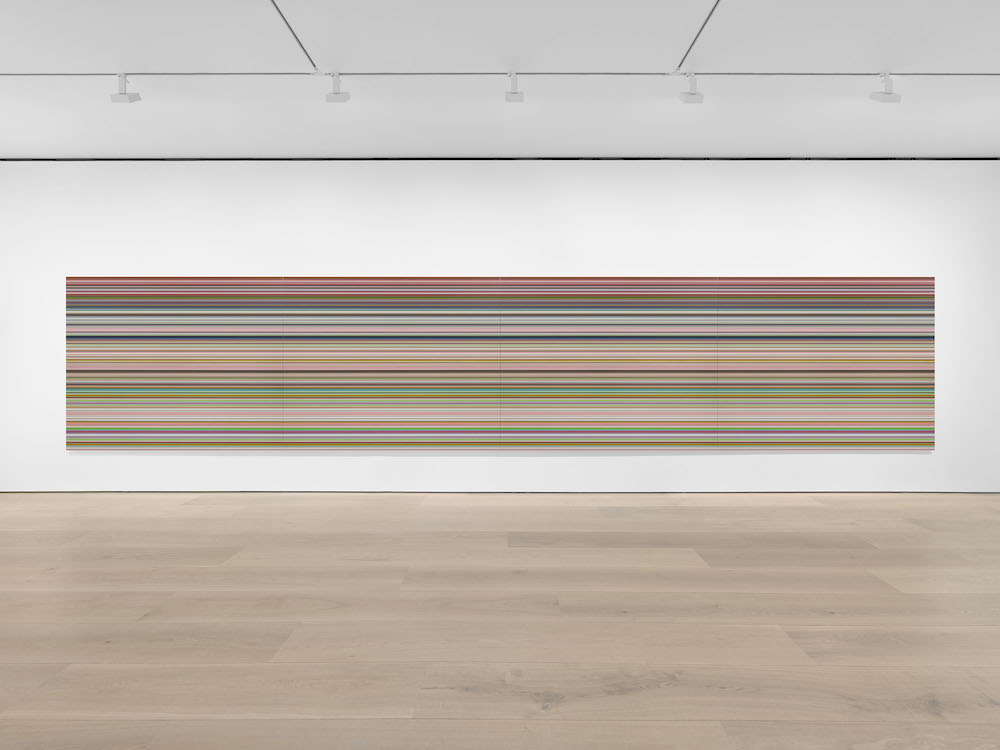
Gerhard Richter, “Strip,” 2013/2016, © David Zwirner.
Also on display are notable pieces that exemplify Richter’s lasting interest in the concept of reflection, encompassing both its material and phenomenological interpretations. His grandiose paintings and installations, spanning entire rooms, stand out for their incorporation of glass and mirrored surfaces, serving as arenas for the perpetual generation and contemplation of a novel form of abstract imagery. Among them is a piece from Richter’s expansive “Spiegel (Mirror)” series, initiated in the 1980s; featuring wall-mounted panels of lustrous tinted glass, they beckon viewers to gaze not only at their immediate surroundings but also to peer beyond. According to the art critic Hal Foster: “The felt analogy between a composed painting and a contemplative viewer is so fundamental that we are not aware of it until it is interfered with. And this is precisely what the glass pieces do: our reflection, in the sense of our mirrored image, disrupts our reflection, in the sense of our contemplation.”
Gerhard Richter’s New Colorful Collages
Furthermore, Richter’s new collage works from 2023 are on display. These pieces are adorned with arrays of interlocking and overlapping polygons in diverse hues, evoking both formally and conceptually his earlier “Farbtafel” (Color Chart) paintings. The collage series was initiated in the 1960s. One can see parallels with Matisse’s cut-outs. In the 2000s, Richter revisited his collage series, which featured multiple colored squares arranged in a randomly organized grid. Initially inspired by the standardized rectangular format of commercial paint samples, Richter’s collages blend Duchampian concepts of the readymade with his ongoing intrigue in the theories of composer and theorist John Cage. In particular, the role of chance in the creation of the collage works plays an important role.
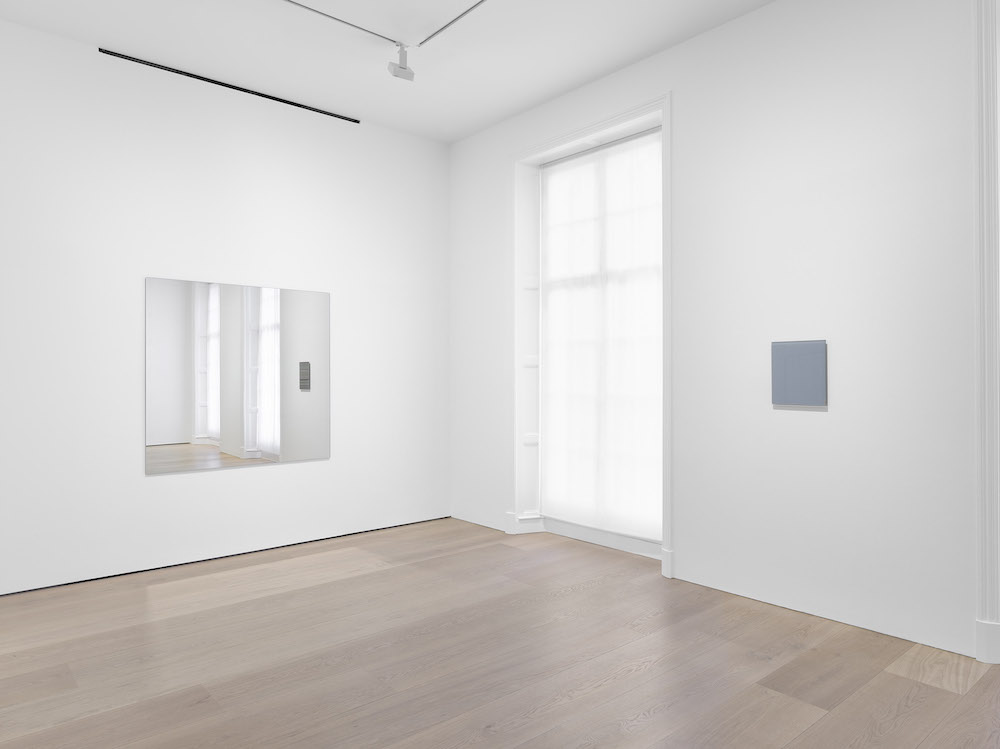
Installation view, “Gerhard Richter,” London, 2024, © David Zwirner.
As visitors explore Richter’s evocative creations, they are prompted to contemplate the dialogue between form and impermanence. Crafted in conjunction with the exhibition “Gerhard Richter: Die Editionen” at the Museum Folkwang in Essen, Germany, “Schädel (Skull)” once more underscores the breadth of Richter’s artistic repertoire, encompassing objects, installations, drawings, editions, and photographic documentation. Since 1965, prints and multiples have held pivotal positions within his body of work, inaugurated by “Hund” (Dog), his inaugural editioned piece.
Similarly to numerous works within Richter’s editioned portfolio, “Schädel (Skull)” is derived from a photograph of a painting bearing the same title, originating in 1983—a seminal exemplar of Richter’s renowned “photo-paintings,” themselves stemming from photographs he captured. The “Schädel paintings”, of which museum collections safeguard four examples, contemplate the ephemerality of time. The nexus between this edition and its source material elucidates Richter’s transformative approach to image construction, erasing boundaries between mediums and prompting introspection on our perceptual engagement with the world.
“Picturing things, taking a view, is what makes us human,” —Gerhard Richter
In essence, Gerhard Richter’s body of work showcased at David Zwirner London delves into the transcendent nature of art, continually evolving and expressing itself beyond the constraints of uniformity. This captivating exhibition guides viewers through a dynamic landscape of abstraction, perception, and creative innovation, inviting them to explore the boundless realms of artistic imagination and challenge preconceived notions of reality. Richter’s profound exploration of mediums and techniques, from his revolutionary squeegee method to his intricate collage and drawing works, underscores his relentless pursuit of artistic evolution and experimentation. Through his visionary perspective, he encourages us to delve into the nuanced interplay between composition and contemplation, between the tangible and the ephemeral. His works also serve as a testament to the enduring power of art to provoke thought, evoke emotion, and transform our perception of the world. As Richter eloquently stated: “Picturing things, taking a view, is what makes us human; art is making sense and giving shape to that sense.”
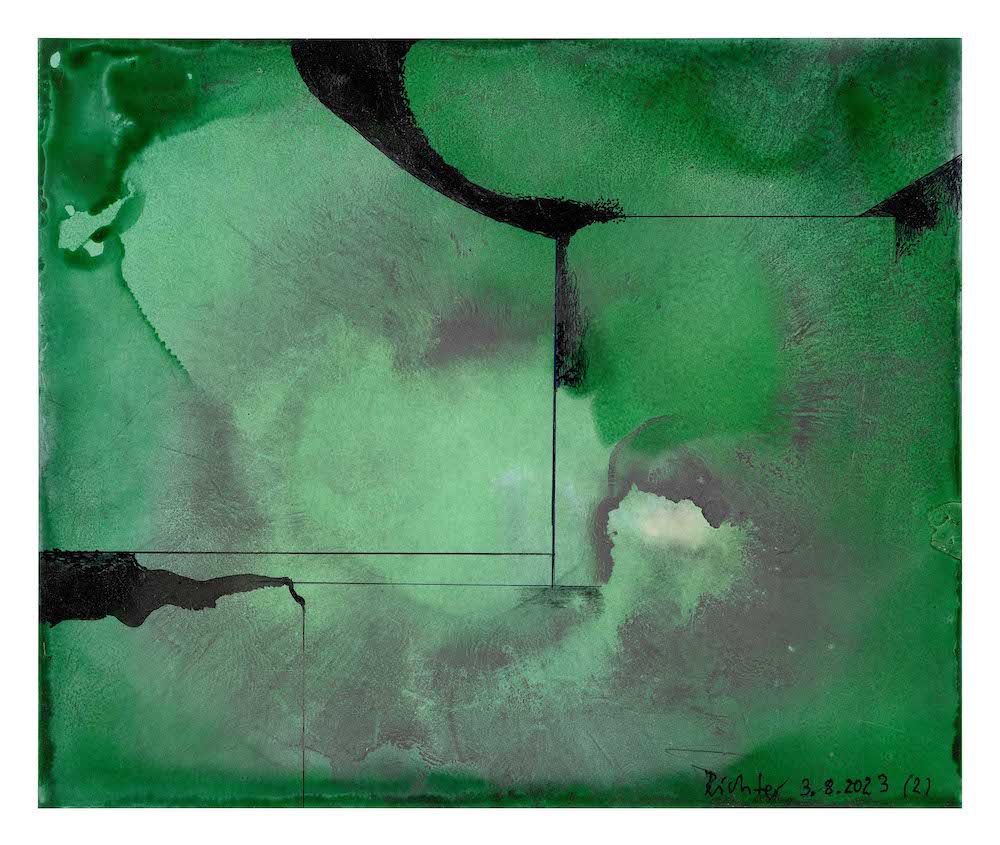
Gerhard Richter, “3.8.2023 (2),” 2023, colored ink and pencil on paper, © Gerhard Richter 2024.



